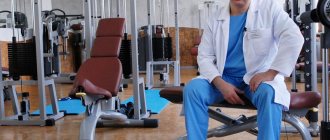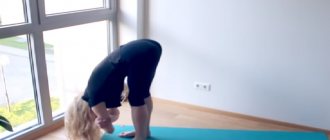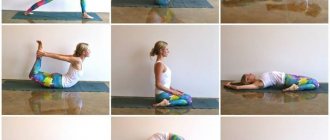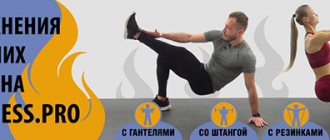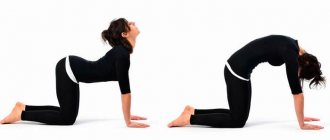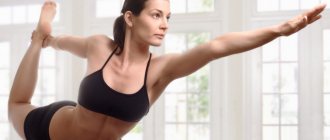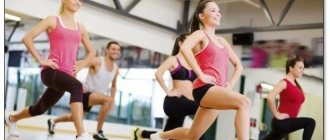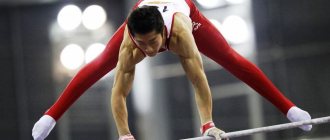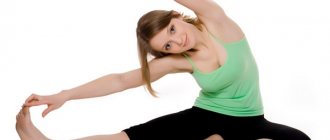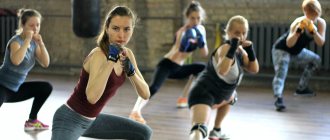≡ March 1, 2020 Category: Mind & Body
Ashtanga Vinyasa yoga is a dynamic type of practice designed for intensive and most accurate implementation of the teacher’s instructions in a certain rhythm. This direction has a rather rigid character, so representatives of the stronger sex are more often fond of this type of yoga. Let's try to take a closer look at what it is and how this direction differs from others.
A little about Ashtanga
Like other Ashtanga yoga practices, Vinyasa has its roots in yoga, which is several thousand years old. However, it was formed into an independent direction relatively recently and appeared in the West thanks to Pattabhi Jones, whom many today consider the founder.
Over the years, many famous personalities could be seen among the students - Sting and Madonna. The trend has gained popularity due to the fact that in the process of training it offers to transform not only the body, but also the mind, and strengthen the spirit.
Ashtanga yoga for beginners requires strict adherence to the sequence of poses and their execution in a given rhythm. Trying to get ahead and being late is not welcome. Only accurate execution will allow you to see progress and move to the next level.
Sequence of Iyengar yoga asanas
This simple sequence of basic Iyengar yoga poses is ideal to begin your practice. The complex focuses mainly on standing poses. Also included are several inverted asanas that are basic to the classic Iyengar yoga sequence. Inverted poses are intended for experienced students and may be skipped by beginners. In addition to standing poses, knee strengthening is emphasized throughout the class. For this reason, classes may be of particular interest to anyone who experiences difficulties with their knee joints. In a broader sense, the complex is intended for everyone who wants to strengthen their legs and improve their posture.
How to prepare for Ashtanga?
Anyone can start attending Ashtanga Yoga Shala classes, and no prior spiritual practices are required. However, due to the nature of the approaches, minimal physical preparation will be simply necessary. The exercises will be aimed at stretching, developing endurance, and strengthening the muscle corset. And for those who have never exercised in their life, such active yoga can be overly tiring and difficult.
In addition to intensive approaches, a beginner will also need:
- Concentrate on sensations in different parts of the body.
- Learn to maintain a meditative state of consciousness.
- Monitor your breathing while performing the exercise.
If you are not sure that this type of yoga is suitable, you can watch a video lesson that gives recommendations and shows the technique.
The main thing is to choose a video that describes the technique for beginners in detail. https://youtu.be/n-yb2CJxpYA
What is hatha yoga
To understand the essence of this teaching, it is necessary to understand some terms and expressions used in yoga. Hatha yoga is physical harmony, which is achieved by focusing your attention on your own body. Physical means of influencing the body include a special diet, proper breathing, a healthy lifestyle, mudras, asanas, and spiritual means are meditation, concentration, correct good thoughts.
Basic rules of hatha yoga:
The word “Hatha” itself is very symbolic, and it has a deep philosophical meaning that reflects all the Eastern wisdom contained in it. "Ha" is the sun and "Tha" is the moon. This implies the unity of two principles - light and darkness, heat and cold, good and evil, “yin” and “yang” and so on. When opposites merge in harmony, equilibrium and balance are created. itself in Sanskrit means “unity” or “union” . Accordingly, yoga practice aims to harmonize the body, mind and spirit.
You will master the technique of meditation or immersion within yourself , which will help you learn to detach yourself from all kinds of problems and find solutions to them using the subconscious. If your studies are accompanied by persistence and perseverance, the desire to achieve results, then gradually you will come to harmony of body, mind and soul.
Some fans of hatha yoga believe that all exercises are aimed at improving stretching, flexibility, weight loss and healing the body . But it is not so. Hatha yoga is designed to work with human energy. Ancient Vedic scriptures state that the human soul (atma) is in the grip of five energy currents.
These are streams of water, air, earth, ether and fire . The only thing that can free the atma from captivity and achieve harmony (samadhi) is practicing hatha yoga . All yoga exercises are deeply thought out, they contain centuries-old wisdom and knowledge of entire generations, who have honed these techniques and given them a perfect, complete meaning.
Each pose is capable of influencing a particular organ in a certain way, healing and strengthening it. Therefore, it makes sense to select the asanas you need and, as you achieve the desired effect, expand and change the set of exercises , which will lead to complete health, balance and perfection. An important role here is played by the sequence of poses, which often smoothly flow into one another.
Who is Ashtanga yoga suitable for?
- For men who want not only to develop physical strength, but also to strengthen their spirit and develop endurance.
- For those who want to test the capabilities of their body and challenge themselves.
- For those who want to quickly get rid of extra pounds. Due to the intense dynamics, calories are burned very quickly, and with heavy sweating, the body gets rid of toxins accumulated over many years.
But it should be remembered that Ashtanga Vinyasa yoga asanas are strictly contraindicated for those who suffer from cardiovascular diseases.
First rule for beginners
No matter how inspiring the instructor’s actions may look in the video, beginners need to remember an immutable rule: start with the simplest, basic things. And this applies to everyone, regardless of the level of physical development and current state of health. Ashtanga yoga is based on controlling the movements of internal currents under the control of consciousness. For beginners, those who have never done this before, it is necessary to use these mechanisms - consciously. So that performing yoga exercises is beneficial and does not cause harm. By the way, the latter is the principle of ahimsa, one of the elements of Yama, the first stage of Ashtanga yoga.
What does practice consist of?
Many people think when studying Ashtanga yoga video lessons that it consists only of asanas, but in fact this is far from the case. This is a complex complex that includes:
- Poses. This is the basis without which no type of yoga can do.
- Vinyasas. Connecting poses into one continuous flow.
- Breath. Moreover, in the process it is important not only to control it, but also to use the throat, making a special sound.
- Concentration. A special type of managing your attention, the ability to concentrate on one point.
- Bandhas are locks. There are 3 of them: root lock, in the abdominal area and throat lock.
In total, Ashtanga has three main steps, which differ in level of complexity and load on the body. Even with excellent physical fitness, it will be impossible to skip any of the stages.
Basic Iyengar yoga asanas for beginners
Utthanasana
Adha Mukha Svanasana
Trikonasana
Virabhadrasana II
Ardha Chandrasana
Parivritta Ardha Chandrasana
Parivrtta Trikonasana
Parivritta Parsvakonasana
Virabhadrasana I
Virabhadrasana III
Parshvotanasana
Prasarita Padottanasana
Salamba Sirsasana
Setu Bandha Sarvangasana
Several levels of practice
To achieve success in this type of yoga, it must begin for any person from the very basics and only gradual advancement guarantees progress. There are several levels in total:
- Kaya Chikitsa (or Yoga Chikitsa - “healing”). This level helps to cleanse the physical body and make it healthier. This stage is considered the most important and main, since only after its complete mastery can one come to a full understanding of all subsequent degrees.
- Nadi Shodana. This stage aims to remove all energetic debris from all channels in the body. It not only allows you to cleanse yourself spiritually, but also to find inner harmony.
- Sthira Bhaga. This level is only for initiates, but it is more difficult than it might seem in reality. Having reached it, the student’s movement does not end, since at this stage there are several more sublevels that help the practitioner not only move on, but also grow spiritually.
It will not be possible to advance through all these levels on your own, studying only from photos on the Internet. To do this, you need to seriously set the goal of mastering this type of yoga and regularly attend classes at the center, following all the instructions of the instructor.
Book “Yoga. Complete Illustrated Guide"
On our website you can download the book “Yoga. A Complete Illustrated Guide,” written by a student of Swami Sivananda. Here are about 150 photographs of classical hatha yoga poses with detailed descriptions. The book is practically an encyclopedia and a complete collection of classic poses. The book also describes breathing techniques and nutrition. You can download the book absolutely free in Pdf format.
Benefits of Hatha Yoga
The combination of asanas and pranayamas has an incredibly strong effect, strengthens memory, rejuvenates and heals the body, concentrates attention, cleanses the blood, fills with strength and energy, calms the nervous system, makes a person immune to stress, infections and diseases. Pranayama cleanses the blood vessels and cells of the body, delivers oxygen-enriched blood to all organs without exception, which contributes to their flawless operation under maximum load. For the greatest effect, you have to consider the direction of your gaze and control of thoughts.
About the benefits of hatha yoga:
Hatha yoga promotes the acquisition of wisdom, excellent health , teaches you to take care of your own body, cleanse your thoughts and body, and lead a healthy lifestyle. Helps to find the right way of behavior among people, increases vitality and strengthens faith. After all, thanks to these amazing activities, you will learn to heal yourself using your own strengths and internal reserves of the body.
Professional instructors will help you master yoga poses in Troitsk, Moscow and other cities.
How to start practicing correctly?
To ensure that your first classes do not discourage you from continuing to practice your chosen direction of yoga, you should use several tips for safely entering the practice:
- The main thing is not to rush to master all the poses, but to concentrate on the technique. It is advisable to strictly follow the teacher’s recommendations and not try to carry them out in your own way. It is advisable to learn the names of asanas, including in Sanskrit.
- At the beginning of yoga practice, you should not try to torture yourself with two-hour workouts; usually even the most advanced followers cannot withstand them. Ideally, for the first time, the lesson should not last more than 40 minutes. You can increase the time gradually, giving the body the opportunity to gradually prepare for the upcoming loads.
- If you overestimate your physical strength, then excessive stress can seriously harm you. Therefore, it is better not to take complicated types of asanas, but always start the lesson from simpler and more understandable positions.
- At first, it is better to pay all your attention to mastering the practice of proper breathing; it will allow you to perfectly energize your body and make it easier to bear stress. An instructor will help you choose a suitable scheme.
- Gradual mastery of practice is the key to progress; there is no need to try to skip or neglect exercises, even if they seem easy at first glance.
- It is also important to monitor your body, how it reacts to certain types of asanas. If necessary, it is better to reduce the load to prevent injury.
Surya Namaskar B
Just like the previous complex, the sun salutation is repeated five times, but already consists of 19 positions, which makes it somewhat more complex and energy-consuming. However, a novice practitioner can also perform it quite well.
Do not start this option until you have mastered each asana, greeting cycle A and lengthened your exhalations and inhalations
Execution sequence:
- We get up in Tadasana to prepare for performing the complex, monitor the position of the body, adjust the breathing, look at the tip of the nose.
- We inhale and raise our arms up, squat, bend our knees without bringing them beyond our toes, and thereby find ourselves in chair pose (Utkatasana). We look at the thumbs.
- We exhale and lean forward, looking at the tip of our nose.
- As you inhale, raise your head and move your gaze to the third eye area.
- We bounce back as we exhale and find ourselves in a plank pose, the body straight and toned. We look at the tip of the nose.
- Inhale and smoothly move into Urdhva Mukha Svanasana. We continue to keep our gaze on the tip of the nose.
- The next movement is difficult in that you need to move into warrior pose I (Virabhadrasana I) with one inhalation. To do this, we turn the left foot inward, step forward with the right foot so that the thigh is parallel to the floor, the knee is above the heel. The pelvis looks straight, the body is in a slight deflection, the hands are joined in a lock above the head, the gaze is directed to the thumbs.
- As you exhale, place your palms on the floor and step back into plank pose. It is worth noting that experienced practitioners use plank pose (Chaturanga Dandasana) in this case, but for a beginner it can be difficult.
- With the next inhalation we return to Upward Facing Dog, looking at the third eye.
- We exhale and move into Adho Mukha Svanasana. Don't forget about bandhas, look at the navel.
- As you inhale, perform warrior pose I on the second side.
- Exhaling, we stand in Chaturanga Dandasana or plank.
- We inhale and smoothly move into upward-facing dog, not forgetting to look at the third eye point.
- Inhaling, we move into downward-facing dog and hold this position for 5 cycles.
- As you inhale, we pull both legs towards our hands and concentrate on the third eye.
- Exhaling, we shift our weight to our legs and stand in Uttanasana, looking at our nose.
- Straighten up into chair pose as you inhale and look at your thumbs.
- We exhale, return to Tadasana, look at the tip of the nose.
Video: Surya Namaskar V
https://youtu.be/oMYlvNsksYs
What are the benefits of Ashtanga?
Ashtanga yoga gives an amazing effect in the form of weight loss, a beautiful athletic toned figure and good health. Here are a few positive effects that are noted by everyone who regularly practices this type of yoga:
- The whole body becomes more flexible, even hard-to-reach muscles are worked out.
- In a short time, the figure becomes more beautiful and stretched.
- The body is cleansed of harmful toxins and waste, stagnation and blocks at the energy level are removed.
- Improves concentration and ability to focus on one task.
- The functioning of the kidneys and liver is normalized.
- Metabolism improves.
But the most important thing is that the technique allows you to achieve amazing growth on a spiritual level and start the process of knowing yourself and avoiding meaningless material activity. The main thing is to clearly set a goal and gradually move forward along your path.
Benefits and harms
There are no significant contraindications for this type of yoga. It is allowed to perform exercises for people with disorders of the spine, endocrine system, weak immunity and many other diseases that do not occur in an acute stage.
If any exercise seems difficult or is not yet acceptable for study, the trainer will be able to select another asana that is suitable for its effectiveness. Women should not perform inversion poses during menstruation.
In addition, it is important for all practitioners to follow the following recommendations so as not to harm their body:
- exercises must be done very carefully, avoiding excessive muscle tension;
- Before class you should warm up well;
- There is no need to perform asanas to the limit of your capabilities, it is better to be prudent, control the duration of the class and your health.
Regular practice has a positive effect on the body as a whole. Increases body flexibility and strengthens muscles. Stimulates and normalizes the respiratory cycle. Improves the health of people suffering from asthma. Strengthens the lungs. Forms correct posture and straightens the spine. Increases stress resistance and relaxes. Strengthens overall health. Helps cope with sleep disorders. Slows down the aging process .
Important! Before class, you must inform the trainer about any chronic diseases or injuries you have. Based on the information received, he will be able to prepare an individual training program.
Components of practice
There are 3 main guidelines for a yogi during a class - correct posture, even breathing, and a point of concentration. The condition for successful practice will be following these guidelines.
Let's look briefly at each of them:
- Asanas. This is what a certain body position is called. Some call asanas poses, others call them exercises. Frankly speaking, they are considered the essence of yoga in the Western world. Whereas in the “Yoga Sutras,” the fundamental source, nothing is written about asanas more than “comfortable and stable body position.” Ashtanga yoga recognizes asanas as a practice for liberating and healing the body, helping to remove tensions. But Ashtanga (unlike hatha) does not consider these achievements to be the main ones.
- Breath. The practice relies on Ujjayi breathing or sound breathing. This is a specific way of breathing that helps to perform asanas correctly. Ashtanga involves several variations of this breathing. For example, the lower abdomen is tucked in, you need to breathe through the chest, covering the throat at the base, so that the air passes through with some difficulty with a hissing sound. The main thing is that breathing helps to perform asanas and is comfortable for the person.
- Vinyasa. This is a dynamic transition between asanas. It is accompanied by proper breathing. On inhalation there is one movement, on exhalation there is another. The upward bodily movement or the movement to expand the sternum and lung volume is always carried out on inhalation, and the downward movement (or to compress the lungs) is always carried out on exhalation. This is one of the main principles of Vinyasa. Another important principle is to move your body to match the pace of your breathing.
Vinyasa yoga for beginners is a practice based on these ligaments (vinyasas). But the main goal of both Ashtanga yoga and Vinyasa is, first of all, the harmonious transformation of body and spirit.
Components of Yoga Practice
Any yoga lesson includes a set of breathing and exercises, as well as relaxation. These three steps should be included in your home workout. Together, these components will help improve physical and psychological aspects.
Breathing exercises (pranayama)
Breathing exercises or “pranayama” form the basis of yoga. Performing pranayama normalizes breathing, expands the lungs and promotes energy accumulation. Its main goal is to teach you how to breathe oxygen. Once you master simple breathing techniques, you can use them to relax and control your emotions.
To understand how to do yoga at home, you must understand three components.
Physical exercises (asanas)
An exercise or “asana” is a sequence of movements. They are called by the names of animals and objects that they resemble (tree, dog, table, fish, etc.). It is customary to perform asanas slowly and thoughtfully, combining each action with proper breathing.
Asanas are also divided into dynamic and static.
Dynamic asanas are designed to warm up muscles and joints, as well as improve blood circulation. Such asanas imply sequential dynamic changes in several body positions. An example of this type of asana is the so-called “sun salutation” (Surya Namaskar).
Static asanas mean staying in one position for a long time. Their essence is to achieve concentration and prepare for meditation.
Asanas are the positions your body takes in class.
The correct sequence of exercises is of great importance in yoga practice. They must be balanced. Thus, a stretching pose is always followed by muscular effort. If you are performing an asana in which your spine is bent forward, then be sure to perform the pose with a backward bend.
Yoga for beginners helps:
- relieve muscle tension;
- massage of internal organs;
- eliminate joint pain, back and neck pain caused by muscle spasm;
- improve blood circulation;
- lose weight.
Don't be tempted to skip the relaxation exercises, as many people who are new to yoga do. They are aimed at relaxing joints, ligaments, muscles and internal organs.
Contraindications to classes
There are many contraindications, since Ashtanga involves high physical activity. And it doesn’t matter whether a person practices at home or works with a trainer in a group or yoga center.
It’s worth looking for other activities if you:
- serious pathologies of the musculoskeletal system, for example, herniated intervertebral discs;
- chronic diseases with frequent and crisis exacerbations (you are better off doing exercise therapy with an instructor);
- postoperative period;
- history of serious head injuries;
- elevated body temperature at the moment;
- taking potent medications for a long period;
- diagnosed with cardiovascular diseases.
Pregnant women practice Ashtanga yoga only if they are experienced, long-practicing yogis who know all the nuances of the practice. For everyone else, it makes more sense to take a special yoga course for pregnant women .

